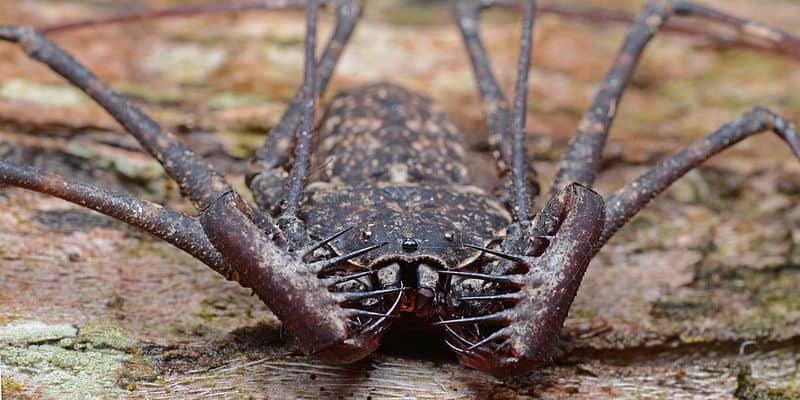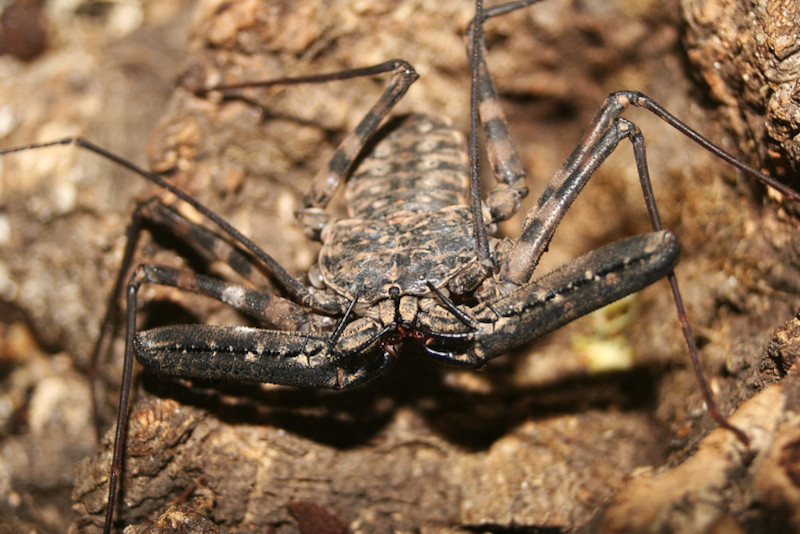
Tailless Whip Scorpion Facts
- Firstly, the collective term Tailless Whip Scorpion refers to any of the 155 known species of arachnids within an Order. Many have referred to members of the Order as the stuff of nightmares.
- However, it does play a sincerely vital role in controlling insect populations in its various habitats. Therefore, while it appears terrifying to some, the various species remain quite useful.
- But, despite its (in the opinion of many) terrifying physical appearance, the Tailless Whip Scorpion remains harmless to humans.
- Finally, the name itself misleads since, though arachnids, it is neither a spider or a scorpion. The order in which scientists classify it has an entirely separate and distinct status from both of those.
Related Articles
Tailless Whip Scorpion Physical Description
Firstly, the various species of Tailless Whip Scorpion range greatly in size. The determining factor remains the span of the legs. Further, in fact, the largest may possess a leg span of as much as 8 in (20 cm).
Additionally, the bodies display a highly flattened shape, and have 8 legs, like all arachnids. However, the first pair evolved differently, to put it mildly. These developed into extended arms with enormous claws, which it no longer uses for locomotion.
Also, the thin antennae (which serve as sensory organs) grow extremely elongated.
Further distinguishing it from spiders and scorpions, it has neither silk glands nor venom. It does, however, have the capability to painfully pierce the skin. That’s due to the thorn-like spikes on the inside of the powerful claws.
- Kingdom: Animalia
- Phylum: Arthropoda
- Class: Arachnida
- Order: Amblypygi
Tailless Whip Scorpion Distribution, Habitat, and Ecology
Most notably, the various types of Tailless Whip Scorpions occur throughout most of the world. But the majority of species appear in either tropical or subtropical regions. However, a few live in temperate climates as well.
Also, the majority of these prefer moist climates. Many, though not all, live as subterranean dwellers.
However, all known varieties of Tailless Whip Scorpion are nocturnal by nature. All feed as insectivores, rather understandably feeding indiscriminately on insects endemic to the respective habitats.
Though fully capable of locomotion in any direction, individuals typically walk sideways. This remains a fascinating adaptation. Uniquely, it is also among the few arachnids known to display social behavior.
Species Sharing Its Range
Check out our other articles on 7 Amazing Australian Species, Pink Fairy Armadillo, Mount Erebus, Mycena Chlorophos, Lord Howe Island Stick Insect, West Indian Ocean Coelacanth, Black Caiman

